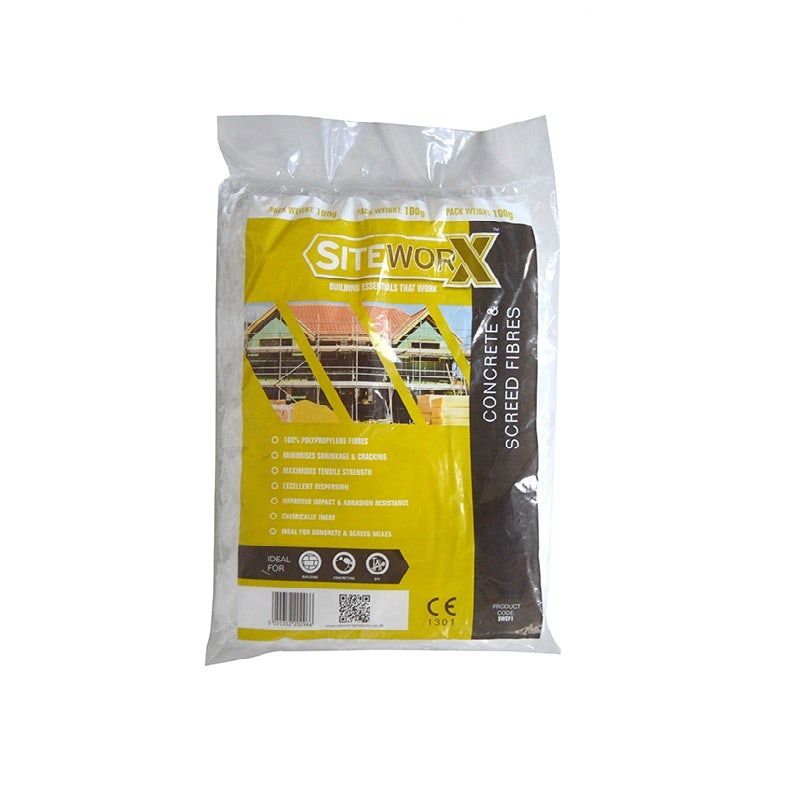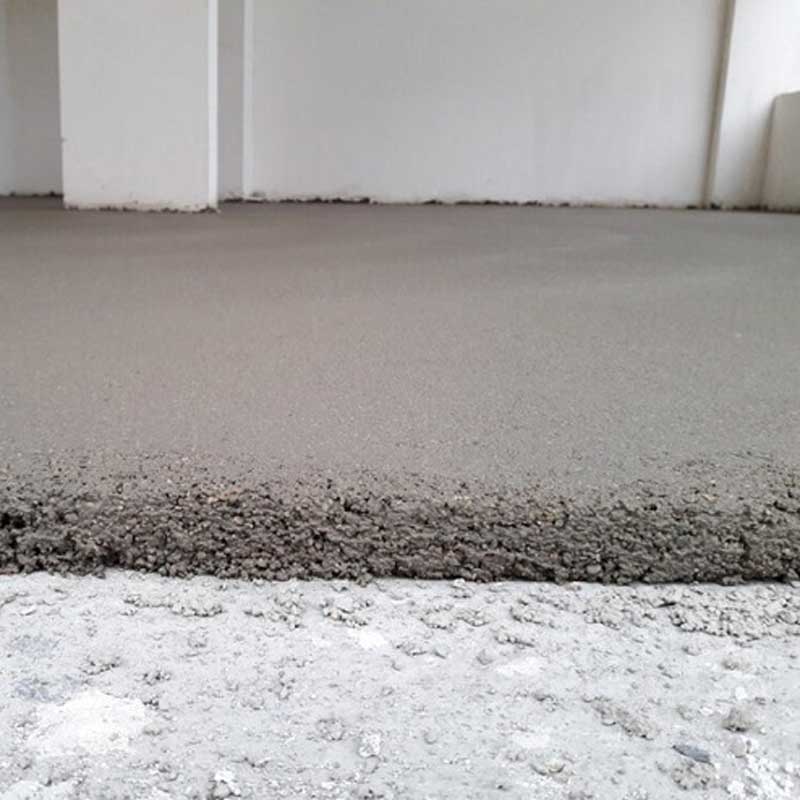What is screed? Screed is a mixture of sand and cement used in a wide range of applications within the construction industry. Essentially, it is a thin layer of material, similar to concrete, that is most commonly applied to a concrete subfloor or over insulation via a process called screening to create a smooth and level floor before laying the floor finish to suit your project.
Screed is typically made from sharp sand, cement and water – in a ratio of around 1:3 or 1:4 of cement/sharp sand. There are a number of additives that can also be used to improve certain characteristics, for example, a faster drying time, improved thermal conductivity for underfloor heating, or increased strength.
Additionally, screed can be reinforced with a wire mesh if required.
Now that we know what screed is, let’s find out how to screed a floor!
Table of contents:
Different types of screed
There are several different ways in which screed can be classified. Here at Insulation Superstore, we’ve used the BS8204 and BS EN 13318 classifications:
Levelling screed
This is a form of screed that is used to create a smooth and level surface onto which a flooring material can be installed. Levelling screed does not affect the structural performance of the floor in any way.
Wearing screed
Also known as a high-strength concrete topping, wearing screed works as flooring. It can also be used as a structural topping.
Bonded screed
Screed that is used on mechanically prepared substrates to maximise the bonding potential.
Unbonded screed
Screed that is separated from the substrate via a membrane – to prevent it from bonding with the substrate.
Floating screed
Screed that is laid onto insulation – a form of unbonded screed.
How to screed a floor
When screeding a floor, the preparation steps are slightly different when using bonded and unbonded screed. We’ve outlined the preparation steps below depending on the type of screed you are using.
How to prepare to lay unbonded screed
Unbonded screed typically sits on top of plastic sheets or another type of membrane, instead of sitting directly on the concrete floor or other substrates. The benefit of this layer is that it protects the concrete floor from moisture and settling.
Step 1: Clean the concrete floor
First, clean the concrete floor to get rid of any dust or grease. Any particles of dirt or grease can prevent the mixture from settling evenly.
Step 2: Lay polythene sheets
Once the flooring area is clean and free from dirt or dust, lay down polythene sheets, or another form of membrane, to keep the concrete flooring separate from the screed. Don’t forget to overlap the sheets by 20-30cm and tape them together to prevent any leakage onto the concrete subfloor. The sheets should also go up the walls by around 10cm.
Step 3: Install insulation or edging foam
Use insulation, edging foam or polystyrene to run around the walls. This will prevent any damage from occurring to the walls when the screed shrinks in the drying process.
Step 4: Reinforce the Screed
If necessary, reinforce the screed with fibres – these will prevent the screed from cracking when it dries, and help to increase its overall strength. Alternatively, take screed reinforcement mesh and lay it over the subfloor. This should then sit in the top half of the screed when it has been laid.
Step 5: Lay the screed
Now the area has been prepared, you’re ready to lay the screed.
How to prepare to lay bonded screed
Bonded screed involves the adhesion of the screed to the concrete subfloor.
Step 1: Roughen the surface of the concrete
The first step is to roughen the surface of the concrete, to maximise adhesive potential. This can be done by using a chipping hammer, or a pick, but you can also choose to use a shot blaster or floor scabbler. The aim is to expose the aggregate in the concrete, as this is what will bond with the screed.
Step 2: Remove dust and debris, and sprinkle with water
Next, remove any dust, debris or dirt, and sprinkle with water – this will reduce the number of airborne particles. The best way to do this is to use a vacuum cleaner.
Step 3: Apply bonding agent
Now apply your bonding agent to the concrete. The most popular options tend to be a mixture of PVA glue, water and cement, or styrene-butadiene rubber (SBR), which is ideal to use in rooms that will be in contact with water. Whichever you choose, follow the manufacturer’s instructions to prepare the bonding agent.
Step 4: Apply screed immediately
Once this has been done, add the screed immediately – don’t leave it for any length of time or the screed and bonding agent will not mix. Once this has been done, it’s time to lay the screed.
How to lay screed
In regards to thicknesses, the unbonded screed should always be around 50mm thick – so when pouring the screed, aim for at least 70-75 mm. This will allow for any variations of height on the subfloor.
Bonded screed should be around 35-40mm thick – if the subfloor isn’t flat and level, always aim for the higher thickness, but never above, as if the screed is too thick, debonding may occur.
Step 1: Divide the floor up.
It is much easier to work on sections of the floor than to try to achieve an even finish across the whole floor in one go. We’d recommend using timber battens to act as a guide – apply a small amount of screed to the flooring to lay the battens on, and lay the battens in strips across the floor.
Try to aim for around 10ft between each guide, and ensure all battens are level using a spirit level. A top tip is to wet the batten before laying it down, as this will make it easier to remove the battens once you’ve finished.
Step 2: Now the screed can start being laid.
The first section to work on is the further section from the entrance, so you don’t need to walk on the screed to get out of the room.
Step 3: Take enough screed to fill around 2ft of the first section.
Spread the screed out with a trowel, then get a screed board or a straight-edged tool to compact and flatten it out – use a chopping motion for the best results. Alternatively, vibrating screed boards are available amongst other compacting tools.
Step 4: Once the screed has been laid to fill the section, use a screed board or piece of timber/another straight edge to level the screed.
Put the straight edge over the battens, resting on each side, and move down the length of the section in a sawing motion. Try to keep the straight edge tilted slightly to have a sharper edge in contact with the screed.
Step 5: Once you’ve created a level and even section of screed, repeat the process in the following sections.
Once two sections have been filled, take the batten out and fill the gap between them, ensuring it remains level and even.
Step 6: Repeat until the whole floor has been screeded.
Now it is time to finish the concrete using a bull float. Repeat this once all the excess water has evaporated or stopped coming out of the concrete. If desired, you can create a textured surface on the concrete, by using a wooden float and moving it across the surface in arched motions. Alternatively, create a smooth finish with a steel trowel flat against the surface.
Step 7: After the screed has been laid, it needs to be cured.
This is most commonly done by placing sheeting across it and sealing it around the edges. Leave this untouched for around 7 days.
Step 8: Allow the floor to dry
Once the seven days have passed, leave the floor to dry for a further three weeks before installing any flooring.
Final thoughts
Screeding a floor offers several benefits, making it a crucial step in many construction and renovation projects.
Firstly, screeding provides a smooth and level surface, ensuring that subsequent flooring materials, such as tiles, laminate, or carpet, can be installed correctly and securely.
Secondly, screeding helps to improve the thermal and sound insulation properties of the floor, enhancing comfort and reducing energy costs.
What’s more, it helps to strengthen the floor, increasing its durability and longevity. Screeding also allows for the correction of any imperfections or irregularities in the underlying subfloor, resulting in a flawless finished surface.
And now that you know how to screed a floor, you’re in a good place to take on this project!
















